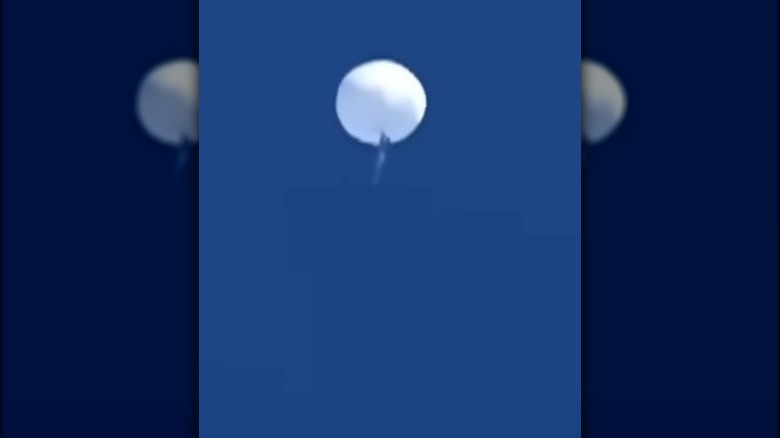What Is Near Space And Why Is It Important?
At a time when certain tech entrepreneurs like Elon Musk have explored the possibility of space travel to Mars, in early 2023, a Chinese spy balloon was shot down by the U.S. military off the coast of South Carolina after the suspected surveillance instrument had been tracked across American airspace for roughly a week, as Axios reports. Per the Ministry of Foreign Affairs of the People's Republic of China, the balloon, a scientific instrument, had been blown off course and its entry into U.S. airspace was unintentional.
On one hand, the use of a lighter-than-air balloon — an outdated technology — for possible international espionage might seem surprising, with futuristic commercial space travel within the realm of possibility from Musk's SpaceX company, among others, as Fast Company writes. What the Chinese balloon incident reveals is that there is a part of the Earth's atmosphere much closer to home known as near space that world powers like China and the U.S. are now in competition to dominate, and as CNN explains, this area of the Earth's atmosphere could be where future international conflicts are staged.
Near space ranges from 12 to 62 miles above the Earth's surface
As Air & Space Forces Magazine writes, what's called "near space" is at least 12 miles but no more than 62 miles above the Earth's surface, or from what's generally agreed upon to be sovereign airspace to the border of outer space, a place where most conventional aircraft, military or otherwise, can't fly, but where the gravity is too strong for satellites to remain in orbit. For these reasons, little so far has happened in near space in terms of air travel, for commercial or military purposes alike, and few world governments have shown much interest in what happens there.
As ASFM goes on to note, that has now changed with the best-suited technology for near space being outmoded aircraft like lighter-than-air balloons, such as the Chinese balloon shot down off the coast of South Carolina. In contrast to the Chinese statement that the balloon was civilian and equipped for scientific purposes when the balloon was shot down, U.S. officials reportedly found technology consistent with intelligence gathering, and in the past, China is known to have flown similar surveillance balloons over more than 40 different nations including some in Europe, East Asia and Southeast Asia, along with countries in Latin America and South America, per The New York Times.
Old flight technology equipped with advanced hardware
Until roughly two decades before the Chinese balloon was detected and shot down, little attention had been paid to near space, but as CNN reports, that area of the atmosphere is now a new battleground, especially for espionage technology. As CNN notes, significant strides have been made by both the U.S. and China to use high-altitude and frankly old-fashioned aircraft like lighter-than-air balloons outfitted with newer technology. In China, this research has been conducted by academic institutions with close links to the government. China may also reportedly be developing hypersonic weapons capable of near-space flight. China has called the U.S. declaration that the balloon had military reconnaissance purposes "public opinion warfare" (via CNN).
In the future, near space might be traversed in hypersonic vehicles or solar-powered drones. On the scientific and military possibilities offered by near space, director of the China Aerospace Studies Institute Brendan Mulvaney told CNN, "The U.S., and other nations as well, have been working on and developing high-altitude aerostats, balloons, and similar vehicles," for near-space travel. Those vehicles are cheap, Mulvaney continued, and "provide long-term persistent stare for collection of imagery," an intelligence term for high-level visual intelligence gathering (via Homeland Security Newswire) as well as, "communications and other information — including weather," Mulvaney said.


